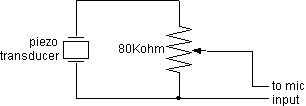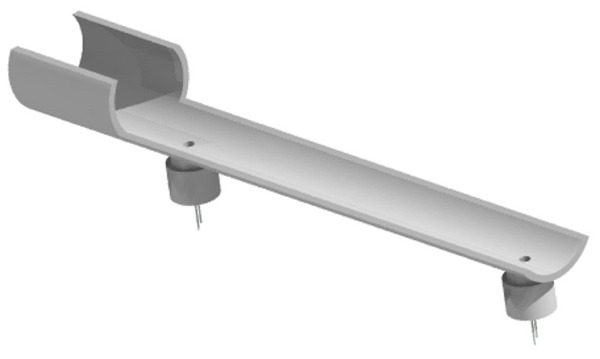Page 2 of 2
Posted: Thu May 13, 2010 11:35 pm
by MrCrowley
Ok did some tests today. Not all the results turned out good, but most did.
By the way, Tech, these are without using the Tone Port, just the good microphone. Distance, still 5m. Mic, set at 2.5m.
I amplified all of the recordings so they peaked. I'm assuming that the first spike is the pilot and the second spike is the main valve. I've bought some phototransistors so I can also make the other setup. WAV files attached.
Posted: Fri May 14, 2010 2:30 am
by Technician1002
Excellent work

Posted: Fri May 14, 2010 2:52 am
by MrCrowley
Thank you, Master

Posted: Fri May 14, 2010 12:24 pm
by Technician1002
You had the idea and did all the work. I just nudged you in the right direction by giving pointers on how to do an audio recording. After you got a good recording, you did all the work. For that I said well done.
I love the echo in the crosman shot.
Posted: Fri May 14, 2010 4:34 pm
by MrCrowley
I love the echo in the crosman shot.
That thing was a little more powerful than I thought, I was worried until I I upstaged my friend with the
maglite mini 
edit:
Figured out the wiring on the phototransistor chrono, hopefully I can finish it today.
Posted: Fri May 14, 2010 8:45 pm
by jimmy101
Instead of mics or phototransistors you can also use cheapo piezo transducers from radioshack. Figure $5 for a pair.
Piezo's can produce pretty significant voltages (at least to a sound card mic input) if they are smacked hard enough (with a sound wave for example) so you might need a voltage divider to protect the PC mic input.
Mount one piezo a couple inches away from the muzzle and another on the back of the target. If you are using a PC you might have inputs for both the left and right audio channels so each piezo can have it's own data stream (look for line inputs instead of mic inputs on your soundcard). If you are using a laptop the mic input is probably mono so the two piezos will have to share the same circuit.

From
http://www.inpharmix.com/jps/Piezo_Spud.html
For some info on phototransistor based chrono see
http://www.inpharmix.com/jps/Jims_chrono.html Here is a simple "clip-on" design that guarantees that the phototransistors are properly aligned with the flight path.

This was built from a piece of pipe of the same diameter as the barrel so it clips on and is held snuggly to the gun. The phototransitors are in the smaller caps on the bottom and their leads are shown in the image. The phototransitors are very close to the flight path but the jig, by its design, is offset from the projectiles path by one pipe wall thickness. Ambient light, particular daylight, is generally more than enough light for the detectors so light sources aren't needed. If you use a MIC input you don't even have to provide power to the detectors since most mic inputs provide power. If you use line inputs then you'll need something like a single AA battery to provide power.
Posted: Fri May 14, 2010 9:31 pm
by MrCrowley
Yeah thanks Jimmy, I actually got the ideas from your website and have been following it closely. The only reasons I didn't make the clip-on attachment is because I want to use this on other launcher and I don't have any golfball diameter PVC pipe at the moment. Costs me $20NZD a meter.
I've built a working phototransistor chrono today, it seems to work pretty well in sunlight. Not as well when it isn't in direct sunlight and there are no lights on. Perhaps it is the way I built it.
I mounted the PT's in a piece of wood. I drilled a ~3mm hole through the wood and then one side of the hole I drilled a hole 80% of the way through that would fit the phototransistors. So the phototransistors are covered from everyside and only the top is exposed.
edit: Yeah for some reason one of the transistors was picking up a signal better than the other even though they're exactly the same. I might mount some lights directly over the holes, that should make it work perfectly.
If that doesn't work or if I have trouble picking up smaller diameter projectiles I'll just do what you did jimmy and mount it to the end of a barrel.
Posted: Sat May 15, 2010 8:00 pm
by MrCrowley
Wired the circuit in parallel and I seem to be getting better peaks/spikes on Audacity. It doesn't work so well in direct sunlight or with lights directly over head, but in the shade or overcast, it works great (waving a screwdriver over the PTs as fast as I could). Hopefully I can do some proper testing today.
Here are some photos.
edit:
Did a test with the V.A.L cannon, shooting a nerf football at 35PSI.
Measuring from the start of the first peak to start of the second peak gives me a time of 0.0032 seconds, the distance between the phototransistors is 28cm or 11". 0.28m/0.0032 = 87.5 meters per second or 287 feet per second.

